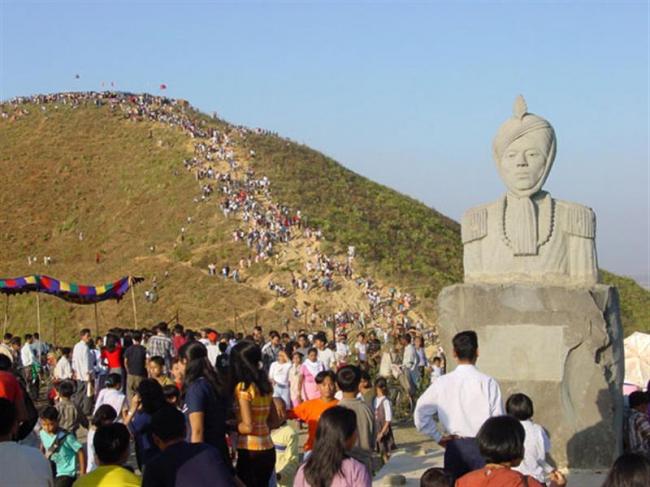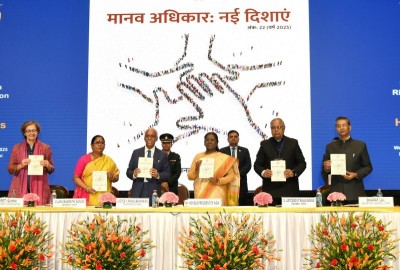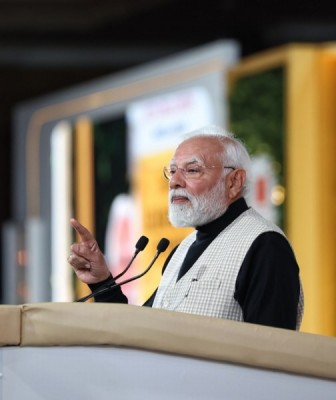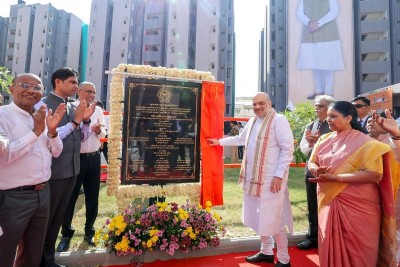
Manipur: Troubles amidst Gains
The protests had started on October 30, 2016, after the State Government decided to upgrade the Sub-divisions of Sadar Hills and Jiribam to full-fledged Districts. The Government subsequently reversed its decision on October 31, 2016, as it was opposed by the Naga organisations who felt that the upgrade would help form more non-Naga-dominated Districts in the State. However, on December 8, 2016, the Government surprisingly announced the creation of seven new Districts - Kangpokpi (conforming to the boundaries of the proposed Sadar Hills District and carved out from Senapati District), Noney (from Tamenglong District), Tengnoupal (from Chandel), Pherzol (from Churachandpur), Kamjong (from Ukhrul), Kakching (from Thoubal), and Jiribam (from Imphal East District).
Among incidents of violence, on December 15, 2016, at least three Manipur Police personnel were killed and another 11 were injured, when militants ambushed road opening parties (ROPs) of the Manipur Police at two different places in Chandel District. The first ambush occurred at around 6 am [IST] near the Lokchao Bridge in Lokchao village. Two Police constables were killed and 11 were wounded. M-79 grenade launcher shells and spent bullets of M-16 assault rifles were recovered from the ambush site. Around two hours later, a Police team coming from the State capital, Imphal, was attacked in the Bongyang area of the same District, and one Policeman on ROP duty was killed. Though no outfit has claimed the attacks so far, based on a report filed by State Director General of Police (DGP) L.M. Khaute, the Manipur Government sent details to UMHA on December 16, 2016, stating that the Isak-Muivah faction of the National Socialist Council of Nagaland (NSCN-IM) was suspected to be behind the twin attacks.
Again, on December 17, 2016, around 70 suspected NSCN-IM militants attacked the Nungkao post of the 6th Manipur Rifles (MR) and 7th Indian Reserve Battalion (IRB) in the newly created Noney District and the militants snatched away their loaded weapons by overpowering the Security Force (SF) personnel.
Earlier, Chief Minister Okram Ibobi Singh came under gun attack on October 24, 2016, when suspected NSCN-IM militants opened fire at him and his associates as they were getting out of their helicopter at the Pakshi Ground Helipad in Ukhrul District. Though the CM and his tem escaped unhurt, one Manipur Rifles trooper, identified as William Tarao, sustained severe injuries in the firing, which lasted for more than ten minutes. The ambush on the CM came amidst protests and a boycott call issued by the native Naga tribal groups in protest against the Ibobi Government's alleged 'step-motherly' treatment towards the Naga inhabited hill areas of the State.
The entirety of incidents in the last few months of year 2016 have created a volatile atmosphere in Manipur, which could lead to a spread of violent clashes between the major ethnic groups in the State.
On the other hand, in terms of insurgency/militancy-related activities, the State has recorded remarkable improvements through 2016, compared to the preceding year. According to partial data compiled by the South Asia Terrorism Portal (SATP), in 2016, the State registered the lowest number of fatalities, at 33 since 1992 [the year since which SATP data is available], including 14 civilians, 11 SF personnel and eight militants. In 2015, the State had recorded 94 killings, including 17 civilians, 24 SF personnel and 53 militants. The significant decline of 64.89 percent in total fatalities in 2016 over the preceding year is indicative of improvements in the general security environment of the State.
As in the case of total fatalities, the State also registered the lowest number of civilian fatalities since 1992. The civilian fatalities in the State have been declining since the year 2008, when they stood at 131. Civilian fatalities peaked in 1993, when 266 were recorded.
There were a total of 22 incidents of insurgency-linked killing recorded in 2016, as compared to 46 such incidents in 2015. The number of major incidents (each involving three or more fatalities) in 2016 also declined, with two such incidents resulting in nine killed and seven injured, as against eight incidents in 2015, with 45 killed and 33 injured. In the worst attack in 2016, on May 22, at least six personnel of 29 Assam Rifles (AR), including one Junior Commissioned Officer (JCO), were killed, and another seven personnel were injured in an ambush laid by militants at Hengshi village, near the India-Myanmar border, in the Chakpikarong tehsil (revenue unit) of Chandel District. The militants had triggered an Improvised Explosive Device (IED) before opening fire on the AR convoy, and they also looted four AK-47 rifles, one light machine gun, one INSAS (Indian Small Arms System) rifle and ammunition. Later, CorCom [Coordination Committee], a conglomerate of six Manipur Valley-based militant outfits - the Kangleipak Communist Party (KCP), Kanglei Yawol Kanna Lup (KYKL), People's Revolutionary Party of Kangleipak (PREPAK), its Progressive faction (PREPAK-Pro), Revolutionary People's Front (RPF, the political wing of the People's Liberation Army, PLA), and United National Liberation Front (UNLF) - has taken responsibility for the attack.
Killing incidents were reported from eight of the State's 16 Districts (including the seven new Districts) in 2016. Chandel District recorded the highest number of fatalities, 11 from four incidents, followed by five killings in Imphal East District in four incidents; Tamenglong, five (from five incidents); Senapati, four (four incidents); Imphal West three (three incidents); Thoubal, two (two incidents); Ukhrul, two (one incident); and Churandpur District, one killing (one incident). Bordering with Myanmar, Chandel District has been witnessing deadly militant attacks on SFs at regular intervals in the recent past and remains volatile. Out of the 11 SF fatalities in the State in 2016, nine were located in Chandel. Interestingly, according to SATP data, among the 10 Districts spread across the four northeastern States [Arunachal Pradesh, Manipur, Mizoram, and Nagaland] of India that share borders with Myanmar, Chandel is the worst affected, accounting for at least 361 fatalities (61 civilians, 136 SF personnel and 164 militants) between January 1, 2000, and December 31, 2016.
Other parameters of violence also declined through 2016. There was a downturn in incidents of explosion, of which 51 were recorded in 2016, resulting in two killed and 28 injured, as compared to 54 in 2015, with eight fatalities and 40 injured. 66 incidents were recorded in 2014, resulting in 15 killed and 76 injured.
The State also recorded a sharp decline in the number of extortion and abduction incidents registered during 2016. A total of 35 extortion cases were reported during 2016; as compared to 46 in 2015. However, actual incidence is likely to be much higher as a large proportion of cases go unreported. There were at least 13 incidents of abduction registered in 2016, with 44 persons abducted; in 2015, 29 incidents were recorded, resulting in 51 persons abducted. In one recent incident, on December 18, 2016, around 22 non-local labourers hailing from various valley areas were abducted by unidentified militants from Paoi village under the Litan Police Station of Kamjong District. On December 19, 2016, the labourers were released near a State security post in Ukhrul District after they had been relieved of their money and mobile phones. The abductors also allegedly forced the labourers to put their names and signatures on blank papers without giving any reason.
SFs arrested 175 militants through 2016, adding to the 478 arrested in 2015. The highest number of arrested militants belonged to different factions of Kangleipak Communist Party (KCP), at 20; followed by 14 each of UNLF and different factions of Kuki National Front (KNF); 13 each of KYKL and NSCN-IM; 10 of the People's Liberation Army (PLA); eight of the Thadou People's Liberation Army (TPLA); seven of the PREPAK; six of the Khaplang faction of National Socialist Council of Nagaland (NSCN-K); five of the Manipur Naga Revolutionary Front (MNRF); four each of the RPF, Progressive faction of PREPAK (PREPAK-Pro), Zeliangrong United Front (ZUF) and National Revolutionary Front of Manipur (NRFM); three of the Naga National Council (NNC); two each of the Vice-Chairman faction of PREPAK (PREPAK-VC), Hmar National Army (HNA) and United Naga People's Council (UNPC); one each of the Kuki Unification Frontal Organisation (KUFO), Bryan faction of Kuki Liberation Front (KLF-Bryan), Kuki People Liberation Front/Army (KPLF/KPLA), Kuki Revolutionary Army Unification (KRA-U), Kangleipak National Revolutionary Front (KNRF); and 35 others, whose affiliation was unconfirmed.
However, the recent spurt in violence by Naga ethnic groups in Manipur in response to the Government's decision to carve out new Districts in the State casts a shadow on the future of the historic "Frame Work Agreement' signed between the Government of India and NSCN-IM on August 3, 2015. One of the major challenges to finalizing a settlement has been the issue of 'Naga integration' of all Naga dominated areas in the States neighbouring Nagaland, including Manipur. The principal demand of NSCN-IM for a Nagalim (Greater Nagaland) comprising contiguous Naga-inhabited parts of Assam, Arunachal Pradesh, Manipur and some bordering areas of the neighbouring country, Myanmar, faces stiff opposition from these States, especially Manipur. The Union Government has, however, committed that it would 'consult all the stakeholders', including the State Government of Manipur, before reaching a final agreement.
Meanwhile, on July 15, 2016, the Union Government initiated the first round of political dialogue with Kuki militant groups - the United Peoples' Front (UPF) and the Kuki National Organization (KNO) - in New Delhi. Satyendra Garg, Joint Secretary, UMHA, who led the central delegation, chaired the meeting, which was attended by representatives from the two militant groups and the Manipur State Government. Further, on October 19, 2016, the second round of tripartite talks was held in New Delhi and, during the dialogue, KNO and UPF reiterated their demands in the presence of senior representative of the Manipur Government. According to UMHA officials, the talks were held in a cordial atmosphere and the next round of dialogue will be held in consultation with the Manipur Government, KNO and UPF. The issue of holding a political dialogue with Kuki militant groups has dragged on for years. The Indian Army and Kuki armed groups have observed a Suspension of Operations (SoO) since August 1, 2005. An agreement involving the UPF, KNO, the Union Government and the Manipur State Government was formally signed on August 22, 2008.
Nevertheless, on November 30, 2016, through a notification issued by the Additional Chief Secretary (Home), J. Suresh Babu, the Manipur Government extended the 'disturbed area status' for the entire State of Manipur, excluding the areas covered by the Imphal Municipal Corporation, under the controversial Armed Forces Special Powers Act (AFSPA), 1958, for another year, with effect from December 1, 2016. The notification stated; "The Governor of Manipur is of the opinion that due to violent activities of various extremist/insurgent groups, the entire State of Manipur is in such a disturbed condition that the use of Armed Force in aid of civil power is necessary". Section 3 of the AFSPA empowers the State Government to extend the disturbed area over the entire State or some selected areas. The AFSPA, which was imposed in the State since September 1980, has been extended from time to time. Except for the seven Assembly segments under the Imphal Municipal Corporation, the 'disturbed area status' would be applicable to all Valley and Hill Districts.
In another development, on August 9, 2016, activist Irom Chanu Sharmila ended her 16-year-long fast demanding the withdrawal of the AFSPA and announced her decision to contest the Assembly polls in Manipur in 2017 under the banner of her newly floated political party, the People's Resurgence and Justice Alliance (PRJA). Sharmila commenced her fast in protest against the November 2, 2000, incident at Malom, a town in the Imphal Valley , in which ten civilians were shot and killed by SFs while waiting at a bus stop, and demanded the scrapping of AFSPA.
Though Manipur has achieved significant success in reducing insurgency-related violence in 2016, the recent escalation of violence and vandalism has the potential to adversely impact on the security situation in the State and across the wider Northeast region as well. Stringent measures to lift the ongoing indefinite economic blockade and counter-economic blockade as early as possible are urgently required, as the current state of affairs is entirely unacceptable and could provoke a cycle of escalating ethnic violence in the State.
Image: Wikimedia Commons
Support Our Journalism
We cannot do without you.. your contribution supports unbiased journalism
IBNS is not driven by any ism- not wokeism, not racism, not skewed secularism, not hyper right-wing or left liberal ideals, nor by any hardline religious beliefs or hyper nationalism. We want to serve you good old objective news, as they are. We do not judge or preach. We let people decide for themselves. We only try to present factual and well-sourced news.







